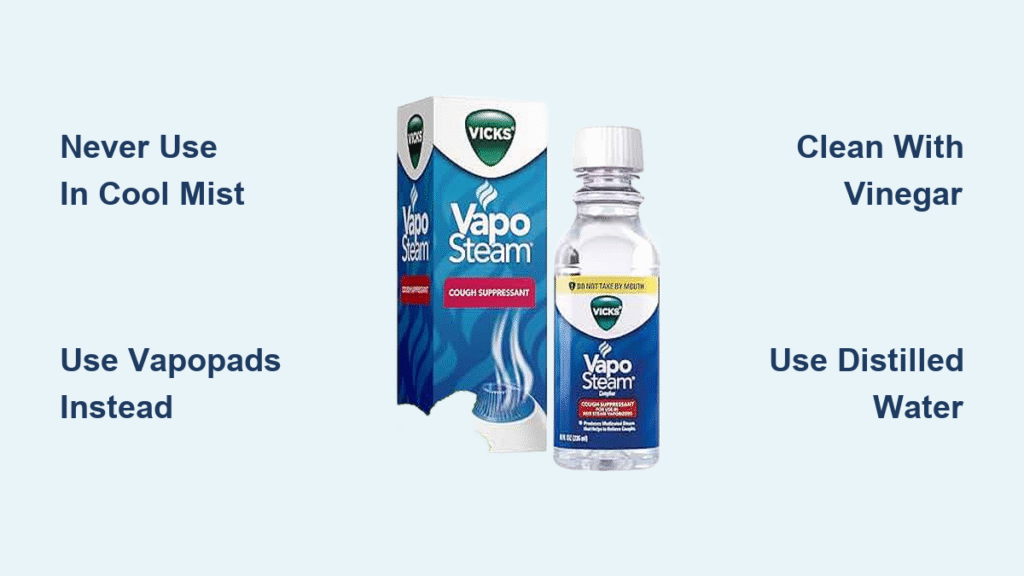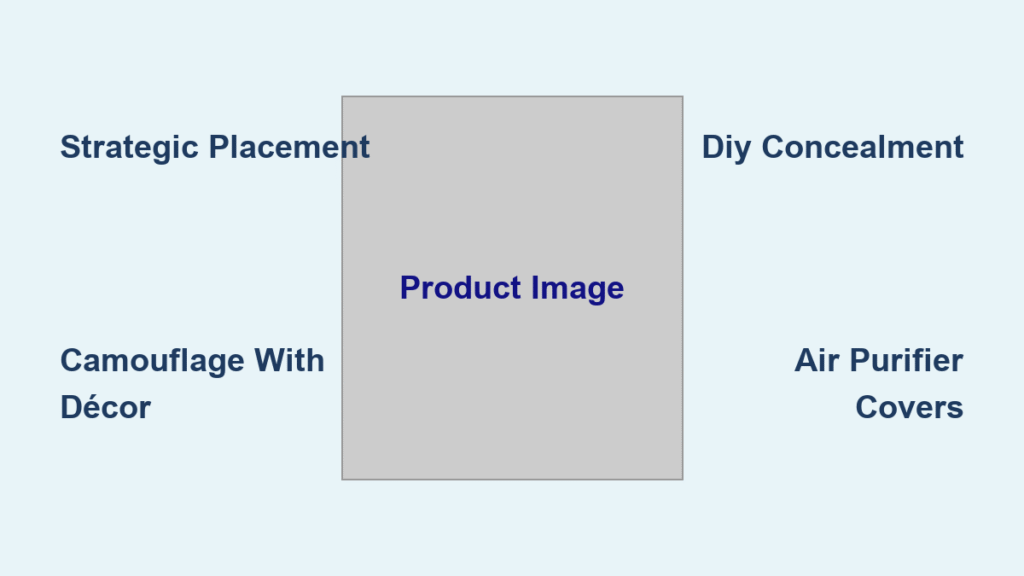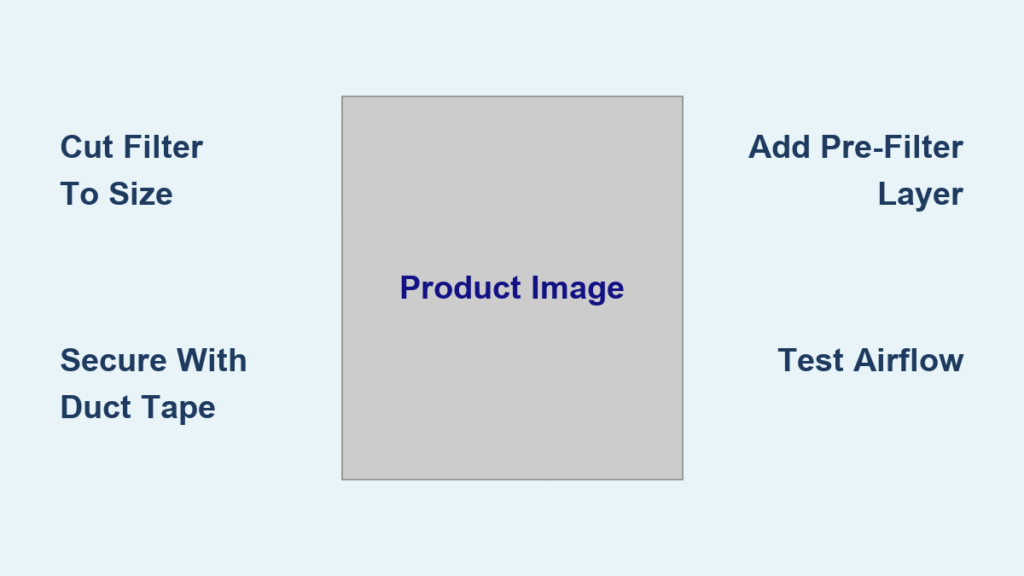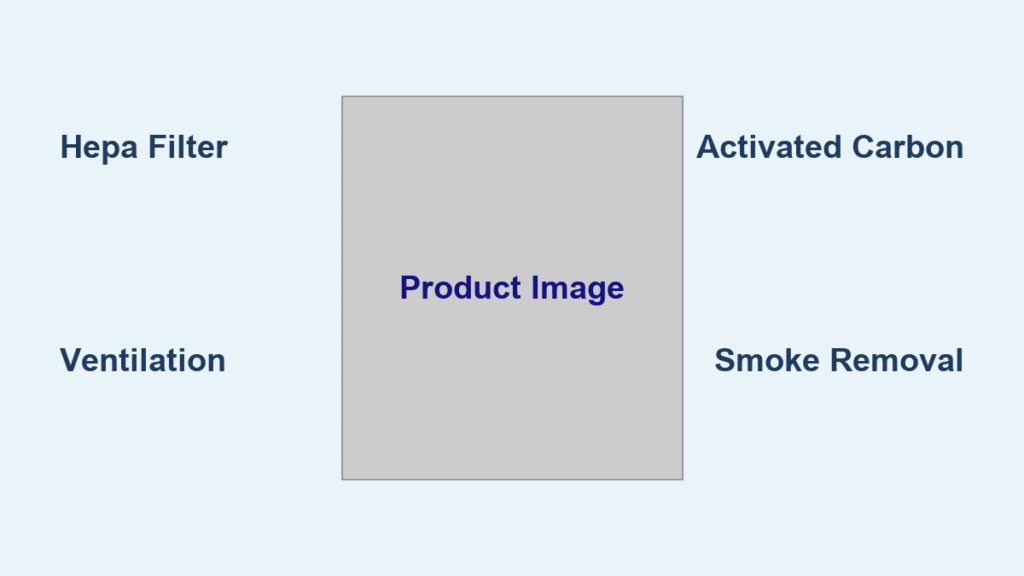That desperate moment when nighttime congestion hits and you spot your Vicks VapoSteam bottle next to your cool mist humidifier feels like a lightbulb moment. Both devices promise relief, so pouring that blue liquid into your humidifier tank seems logical—until the mist sputters and dies. What you might not realize is that this common mistake can permanently wreck your humidifier in under 72 hours. The harsh truth? Vicks VapoSteam and cool mist humidifiers are fundamentally incompatible, and understanding why could save you costly repairs or replacements.
This isn’t just manufacturer caution—it’s chemistry clashing with engineering. VapoSteam’s oil-based formula sabotages the delicate mechanics of cool mist systems while failing to deliver proper medicated relief. But don’t panic if you’ve already made this error. We’ll show you exactly how to rescue your humidifier, reveal the only Vicks product designed for cool mist units, and provide a step-by-step protocol to keep your device running smoothly. Most importantly, you’ll learn why separating your medicated steam therapy from humidity control is the smarter, safer solution.
Why VapoSteam Causes Cool Mist Humidifier Failure

Oil Residue Clogs Critical Components Within Hours
VapoSteam’s camphor and eucalyptus oil compounds create sticky deposits that attack your humidifier’s inner workings. Unlike warm steam vaporizers that evaporate these oils, cool mist technology lacks heat to properly disperse them. This leads to three immediate failures:
- Ultrasonic plates become coated with a gummy film that blocks vibration, cutting mist output by 80% within 24 hours
- Wicking filters disintegrate as oils saturate the material, causing them to crumble during operation
- Airflow channels gum up with residue, creating uneven vapor distribution that leaves you without relief
Look for these visual red flags: cloudy residue on the water tank walls, reduced mist volume, or a faint medicinal smell lingering after shutdown. These aren’t temporary glitches—they signal permanent damage if ignored.
Manufacturer Warnings Aren’t Just Legal Fine Print
Flip your VapoSteam bottle and you’ll see the critical disclaimer: “For use in warm steam vaporizers only.” This warning exists because Vicks’ engineering tests prove oil-based additives destroy cool mist mechanisms. During lab trials, humidifiers exposed to VapoSteam showed complete ultrasonic plate failure after just three uses. The label isn’t liability protection—it’s your device’s survival guide.
The Only Safe Vicks Solution for Cool Mist Humidifiers
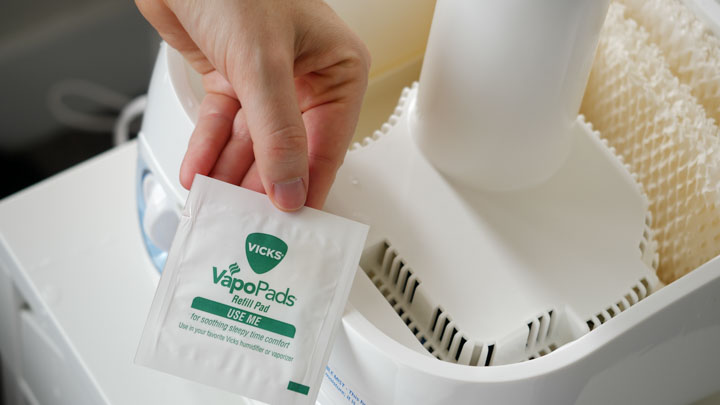
VapoPads: Precision-Engineered for Cool Mist Systems
Vicks developed VapoPads specifically to solve this compatibility crisis. These dry medicated pads contain menthol or rosemary/lavender scents in a solid matrix that releases vapor safely through cool airflow—no liquids, no residue. Key advantages over VapoSteam:
- Zero risk to ultrasonic plates or filters since no liquids contact internal parts
- Consistent 8-hour scent duration without concentration spikes
- Designed airflow channels in Vicks humidifiers maximize vapor dispersion
- Eliminates white dust issues caused by oil-mineral interactions
Pro Tip: Generic “aromatherapy pads” often leak oils when humidifier humidity rises. Stick with genuine VapoPads—their sealed design prevents moisture-triggered leaks.
Correct VapoPad Installation Protocol (2-Minute Fix)
Your humidifier’s VapoPad compartment isn’t just a storage slot—it’s an engineered airflow channel. Misplacement renders it useless:
- Locate the compartment—usually a small rectangular slot near the mist outlet marked with a VapoPad icon
- Peel open packaging just before insertion (exposure to air degrades potency)
- Insert with scent side facing airflow (look for embossed arrows on the pad)
- Snap the cover shut until it clicks—gaps disrupt vapor distribution
Replace pads when scent fades (typically 8 hours), but never force expired pads into the slot. Crumbled material can jam the mechanism.
Emergency Recovery After VapoSteam Accidents
Critical First Response (Do This Within 1 Hour)
If you’ve poured VapoSteam into your cool mist unit, immediate action can salvage it. Delaying beyond 60 minutes risks permanent damage:
- Unplug immediately—don’t wait for the mist to stop
- Discard all water down the sink (oils won’t drain through filters)
- Remove and trash filters—they’re permanently contaminated
- Rinse tank/base with hot tap water until water runs clear
Warning: Never run the humidifier to “flush out” residue—this spreads oils deeper into components.
Vinegar Deep Clean: The 30-Minute Rescue Plan
Distilled white vinegar dissolves oil residues VapoSteam leaves behind. Follow this sequence:
For the water tank:
– Fill completely with undiluted vinegar
– Soak for 30 minutes (set a timer—longer causes plastic odors)
– Scrub stubborn spots with a bottle brush (no abrasives!)
– Rinse 5x with distilled water until vinegar smell vanishes
For the base unit:
– Pour 1 cup vinegar into the reservoir
– Let ultrasonic plate soak 20 minutes
– Gently brush the plate with a soft toothbrush
– Run 3 cleaning cycles with vinegar before final rinse
Test success: After reassembly, run on high for 10 minutes. Full mist output with zero medicinal odor means you’ve won the rescue mission.
Preventing Future Disasters: Humidifier Care Protocol

Water Quality = Mist Quality (Non-Negotiable Rule)
Your humidifier’s performance lives or dies by water quality. Tap water causes:
- White dust clouds from aerosolized minerals
- Ultrasonic plate scaling that reduces mist by 50%
- Bacterial blooms in stagnant water
Always use distilled water—it’s the single most effective maintenance step. Keep a dedicated jug in your fridge for quick refills.
Placement Secrets for Maximum Relief
Most users position humidifiers incorrectly, wasting 70% of the mist. Optimize placement:
- 4 feet from your head prevents over-humidification of airways
- 6 inches from walls avoids moisture damage to paint
- Never on carpet—fibers clog intake vents within days
- Elevated surface like a nightstand (not the floor)
Run a hygrometer nearby—stop the unit if humidity exceeds 50%. Condensation on windows means you’ve crossed into mold-risk territory.
Smart Alternatives for Medicated Relief
Dual-Device Strategy: The Doctor-Approved Approach
Pulmonologists consistently recommend separating humidity control from medicated therapy:
- Cool mist humidifier for baseline humidity (30-50%)
- Warm steam vaporizer with VapoSteam across the room
- Never operate both simultaneously in the same space
This prevents over-humidification while delivering precise medicated steam. Keep the vaporizer at least 6 feet from the humidifier to avoid cross-contamination.
When to Skip Additives Entirely
For mild congestion, try these safer solutions first:
– Add 1 tablespoon colloidal silver to tank water (natural antimicrobial)
– Place damp washcloth near heater vents for instant steam
– Sleep with head elevated 30 degrees using extra pillows
Consult your doctor before using any additives if you have asthma—the wrong vapor can trigger attacks.
Long-Term Maintenance Checklist
Weekly Routine (15 Minutes to Prevent $100 Repairs)
- Empty tank after each use—never let water stagnate
- Wipe base with vinegar-dampened cloth (unplugged!)
- Inspect ultrasonic plate for white scaling
- Replace filters monthly (even if they look clean)
Storage Protocol for Off-Seasons
Before storing your humidifier:
1. Run final cycle with vinegar solution
2. Disassemble all parts and air-dry 48 hours
3. Store in original box with silica gel packets
4. Never stack items on top—warps the base
Critical step: Install a new filter before first use next season. Old filters harbor dormant mold.
Using Vicks VapoSteam in cool mist humidifiers isn’t just ineffective—it’s a fast track to expensive damage. The oil-based formula gums up ultrasonic plates and filters within hours, while failing to deliver proper medicated relief. Your safest path? Use VapoPads in compatible units for cool mist aromatherapy, and run a separate warm steam vaporizer with VapoSteam when you need stronger congestion relief. Always choose distilled water, maintain strict cleaning schedules, and position your humidifier strategically. By respecting these technology boundaries, you’ll breathe easier knowing your devices work as engineered—without risking permanent damage. When congestion strikes, remember: two devices working separately deliver far better results than one compromised unit struggling to do both jobs.

